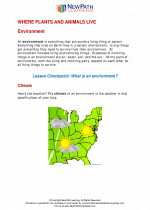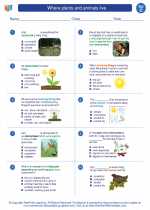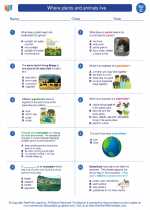Microorganisms
Microorganisms, also known as microbes, are tiny living organisms that are too small to be seen with the naked eye. They include bacteria, viruses, fungi, and protists. Microorganisms are found everywhere - in the air, soil, water, and even inside our bodies.
Types of Microorganisms
- Bacteria: Single-celled organisms that can be found in various environments. Some bacteria are harmful, causing diseases, while others are beneficial and help with processes like digestion.
- Viruses: Small infectious agents that can only replicate inside the cells of other organisms. They cause a wide range of diseases in humans, animals, and plants.
- Fungi: These include molds, yeasts, and mushrooms. They can be helpful, such as in the production of food like bread and cheese, or harmful, causing infections.
- Protists: Single-celled organisms that are more complex than bacteria. They include algae and protozoa, and can be found in aquatic environments.
Importance of Microorganisms
Microorganisms play a crucial role in the environment and in our lives. They are involved in processes such as decomposition, nitrogen fixation, and food production. They are also used in industries like pharmaceuticals, agriculture, and biotechnology.
Study Tips
- Use a microscope to observe different types of microorganisms.
- Research the role of microorganisms in specific industries or environmental processes.
- Learn about the diseases caused by harmful microorganisms and how they can be prevented.
- Understand the importance of microorganisms in maintaining ecological balance.
Now that you have a better understanding of microorganisms, you can explore their fascinating world and their impact on our lives!
.◂Science Worksheets and Study Guides Third Grade. Where plants and animals live
Study Guide Where plants and animals live
Where plants and animals live  Worksheet/Answer key
Worksheet/Answer key Where plants and animals live
Where plants and animals live  Worksheet/Answer key
Worksheet/Answer key Where plants and animals live
Where plants and animals live  Worksheet/Answer key
Worksheet/Answer key Where plants and animals live
Where plants and animals live  Vocabulary/Answer key
Vocabulary/Answer key Where plants and animals live
Where plants and animals live  Vocabulary/Answer key
Vocabulary/Answer key Where plants and animals live
Where plants and animals live 

 Worksheet/Answer key
Worksheet/Answer key
 Worksheet/Answer key
Worksheet/Answer key
 Worksheet/Answer key
Worksheet/Answer key
 Vocabulary/Answer key
Vocabulary/Answer key
 Vocabulary/Answer key
Vocabulary/Answer key

The resources above cover the following skills:
LIFE SCIENCE
Unity and Diversity
Construct an argument from evidence to explain the likelihood of an organism’s ability to survive when compared to the resources in a certain habitat (e.g., freshwater organisms survive well, less well, or not at all in saltwater; desert organisms survive well, less well, or not at all in woodlands).
Create models that illustrate how organisms and their habitats make up a system in which the parts depend on each other.